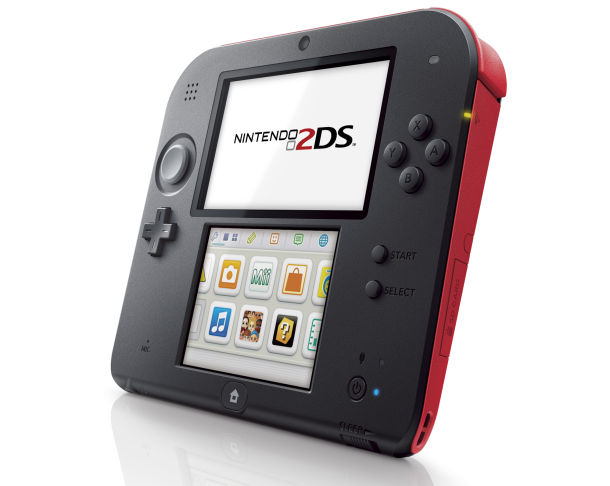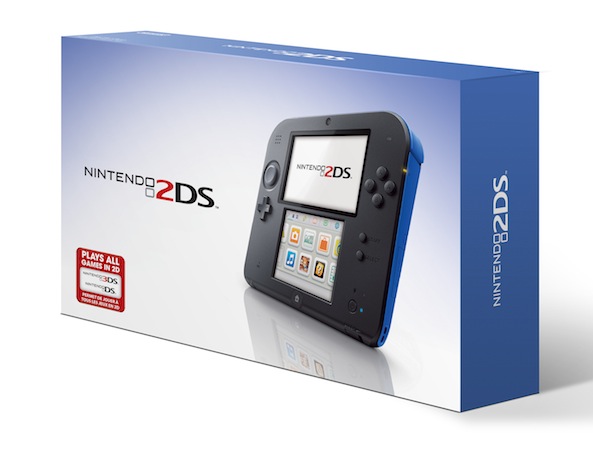By Jeff Bond on August 28, 2013 at 11:06am
In a surprising move today, Nintendo announced the release of a new handheld console, the 2DS. When we first saw the name of the console, we thought it was a typo or something from The Onion, but no, this is an actual thing.
The 2DS is set to release Oct. 12, the same day as "Pokemon X" and "Y." The console will be available in red and blue and retail for $129.99. The system is set to contain all of your standard 3DS functionality such as the ability to play both 3DS and regular DS games, dual rear-facing cameras, Wi-Fi, local multiplayer, and even sleep mode. However, the sound system has been downgraded, going from a dual-speaker stereo setup to a single-speaker mono setup. The screen is also the same size as the original launch 3DS and not the larger size found in the 3DS XL, which is a fair trade for the lower price point.

The system is aimed to be a sort of entry-level 3DS. The concept is actually pretty simple. A lot of folks want to play the new 3DS titles but may be put off by the price point of the 3DS for a 3D feature that they will never use. From personal experience, I find myself not using the 3D mode very often, maybe only 10 percent of the time. Having a feature-limited system that can still play the new titles without the extra, expensive hardware starts to make a little more sense. It would also serve as a good device for younger children. Nintendo originally added Parental Controls to the 3DS to disable the 3D effect, as it may be harmful to their eyes, so this new system removes the need for that parental control. Reggie Fils-Aime, president and CEO of Nintendo North America:
We’re always thinking about what we can do that’s new, unique, different, and brings more people into this category that we love, and so with the Nintendo 3DS, we were clear to parents that, ‘[H]ey, we recommend that your children be seven and older to utilize this device.’ So clearly that creates an opportunity for five year-olds, six year-olds, that first-time handheld gaming consumer.
The system itself is slab-like in shape instead of the standard hinged design players have seen since the original DS released in 2006. Imagine taking your DS, opening it up, and flattening it out. That's what the 2DS does. On one hand, if the target demographic is indeed younger children, the new form factor makes sense. Without the hinge as a point of failure, it may end up being more durable. However, without the hinge mechanism, the screens may lend themselves to being scratched more easily. Aside from how this new form factor will fit in your hands and feel, we are also left wondering how portable it would be. With the hinged design, it can fit in pockets pretty easily, but now that the device is one solid unit, we're not so sure how that will work out.
IGN Polygon




